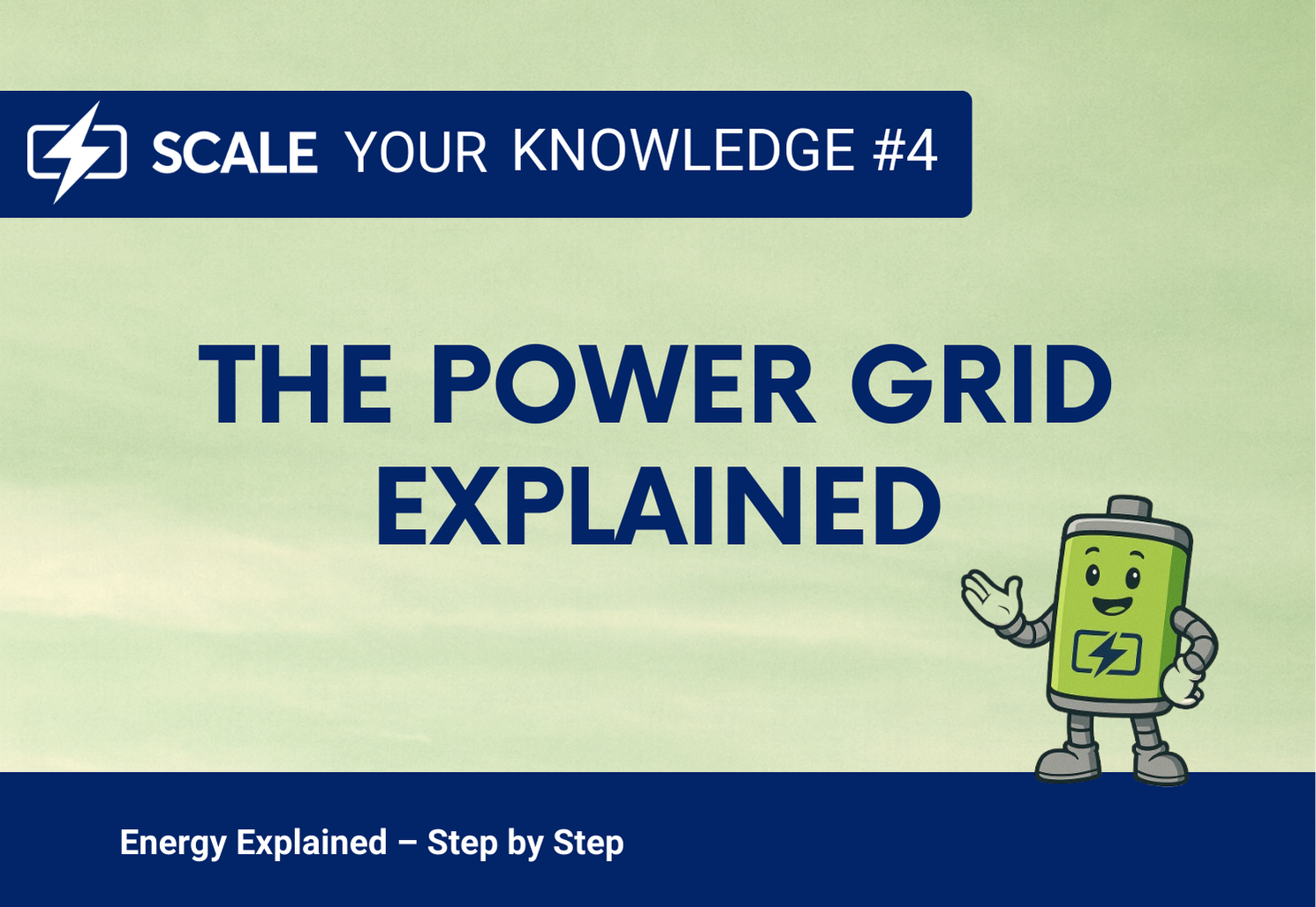News
Scale Your Knowledge #4 – The Power Grid Explained: From Generation to Your Outlet

From Power Plant to Socket – How the Grid Works
Electricity is an essential part of our daily lives. Yet the path it takes from generation to your socket is highly complex. Reliable, around-the-clock supply depends on a finely tuned system of transmission lines, substations, and grid operators working seamlessly together.
Transmission Grid vs. Distribution Grid
The European power system is structured hierarchically.
- Transmission Grid: At the highest level, four transmission system operators (TSOs) in Germany transport electricity at 220,000 to 380,000 volts over long distances – for example, from offshore wind farms in the north to industrial centers in the south. High voltages minimize transmission losses and make the long-distance transport of large energy volumes efficient.
- Distribution Grid: Downstream, electricity is stepped down in several stages – from high voltage to medium voltage (10,000 to 30,000 volts), and finally to 230 volts low voltage, which we use in homes and offices.
Why Voltage Transformation Is Essential
The higher the voltage, the lower the line losses. Direct transport at household voltage would be technically and economically unfeasible – far too much energy would be lost along the way. Transformers ensure optimal voltage levels: high for long-distance transmission, low for safe consumption.
The Role of Grid Operators
- Transmission System Operators (TSOs) safeguard system stability. They maintain the grid frequency at a constant 50 hertz and balance supply and demand in real time.
- Distribution System Operators (DSOs) ensure that electricity is safely and reliably delivered to households, businesses, and industries at the local and regional level.
Conclusion
The power grid is the backbone of modern energy supply. It links power plants, renewable generation, storage, and consumers into a single, highly complex system. Only this structure guarantees that electricity is always available exactly where it is needed – seamlessly delivered to the socket.





